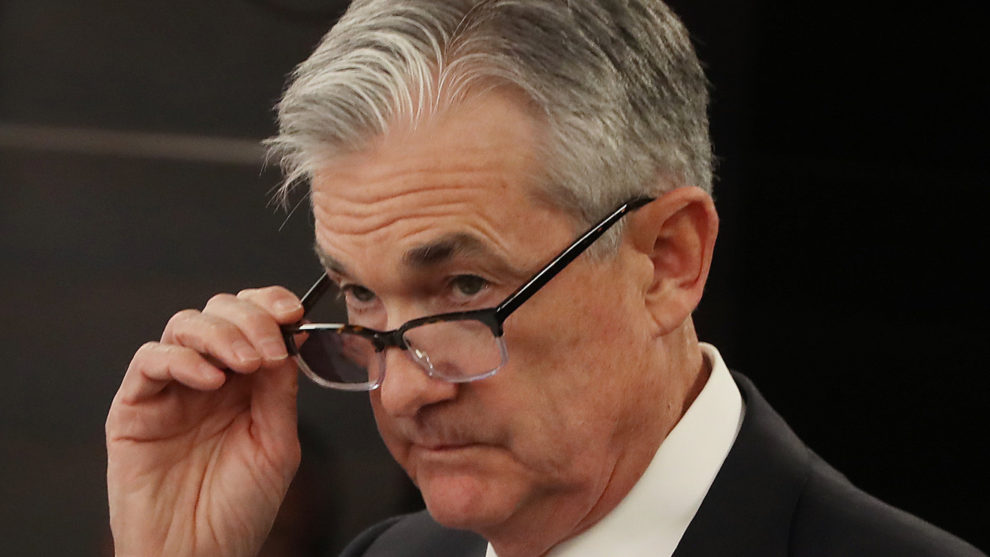
U.S. stock-index futures on Thursday indicated a muted open for major benchmarks as investors watched for fresh economic reports, including weekly claims for unemployment benefits, and a speech from Federal Reserve Chairman Jerome Powell, which could provide guidance on the health of the coronavirus-ravaged economy.
An agreement between the Organization of the Exporting Countries and other key producers also will be watched.
U.S. exchanges on Friday will be closed in observance of Good Friday, and those in Europe will also be closed for Easter Monday.
How did indexes perform?
Futures for the Dow Jones Industrial Average YMM20, +0.13% were off 37 points, or 0.2%, at 23.209; those for the S&P 500 index ESM20, -0.16% edged down 13.15 points, or 0.5%, at 2,721, and Nasdaq-100 futures NQM20, -0.18% slipped 52.75 points, or 0.6%, lower to reach 8,137.
On Wednesday, the Dow DJIA, +3.44% rose 779.71 points, or 3.4%, to finish at 23,433.57. The S&P 500 index SPX, +3.40% added 90.57 points, or 3.4%, to end at 2,749.98, and the Nasdaq Composite Index COMP, +2.58% climbed 203.64 points, or 2.6%, to close at 8,090.90
For the week, the Dow is up 11.31%, the S&P 500 is set to rise 10.5% and the Nasdaq is on track for a gain of 9.7%, as of Wednesday’s close.
Since their all-time highs, the Dow is now 20.7% off its record close in February, while the S&P 500 is off 18.8% and the Nasdaq off 17.6%, according to Dow Jones Market Data.
What’s driving the market?
Investors will turn to a parade of data to confirm a mini rally that is building in equities in the final trading day of the holiday-shortened week, with a 10 a.m. Eastern Time speech by Federal Reserve Chairman Jerome Powell serving as the highlight of a packed slate on Wall Street.
Before the chairman’s speech, however, jobless claims at 8:30 a.m., will likely show another big burst higher in those seeking unemployment benefits after 6.6 million job losses last week. Thursday’s data will be pored over for the depth of the crisis that has been created by the deadly viral outbreak that has forced business closures and brought the economy to a near-shutdown.
Initial jobless claims from March 29 to April 4 likely rose by 6 million, according to the latest MarketWatch survey of economists, which would bring the total job losses due the coronavirus pandemic to more than 15 million.
Powell may be able to provide some comfort to investors after the labor-market report. The policy makers speech comes a day after the Fed released minutes of emergency meetings held on March 2 and March 15, where the central bank slashed rates to a current range between 0% and 0.25% and unleashed a bevy of historic stimulus measures.
“All participants viewed the near-term U.S. economic outlook as having deteriorated sharply in recent weeks and as having become profoundly uncertain,” the minutes showed.
Markets this week have been, buttressed by signs of a slowdown in the number of hospitalizations and intensive care admissions in New York, which has emerged as one of the epicenters of the outbreak. The receding infections have provided some hope to bulls that the worst of the disease may be over for, but experts have advocated caution and patience in dealing with the new strain of coronavirus that was first identified in Wuhan, China in December and has infected 1.5 million people and claimed nearly 88,982 lives world-wide, according to data compiled by Johns Hopkins University as of Thursday morning.
In parts of Europe, lockdown measures imposed to mitigate the contagion are set to come off.
However, a number of strategists and market experts also have been skeptical of the recent bullishness in the market, suggesting that the market’s have moved too far and too fast and seem likely to retest lows put in on March 23.
“Financial markets appear to be looking beyond the continued rise in both infection and death rates, and to when the various lockdown measures might well be eased,” wrote Michael Hewson, chief market analyst at CMC Markets UK, in a Thursday research note. “The risk is that they, and we, could be getting ahead of themselves, and teeing themselves up for disappointment later in the month,” he said.
Investors also will watch an important gathering that is intended to stabilize oil and end a price-damaging war for market share between major crude producers Russia and Saudi Arabia.
In other economic reports, investors will watch for a report on producer prices due at the same time as jobless claims and later in the morning readings of consumer sentiment and whole sale trade in goods are set to be released at the same time as Powell’s speech.
An update on the Fed’s balance sheet amid its historic stimulus measures will be released at 4:30 p.m.
How are other markets trading?
In bond markets, the yield on the 10-year U.S. Treasury note TMUBMUSD10Y, 0.733% retreated 3.4 basis points to 0.730% from 0.762% late Wednesday. Bond prices rise as yields fall.
U.S. oil prices were firmly higher ahead of a meeting of OPEC and a number of key producers on Thursday, with a barrel of West Texas Intermediate crude for May delivery CLK20, +7.85% gaining 6.7% at $26.79.
In precious metals, the price of an ounce of gold for June delivery GCM20, +1.33% rose $20.60, or 1.7%, to $1,705 an ounce, which would put the price back around its highest level since 2002.
The U.S. dollar was little changed relative to a basket of trading peers, gauged by the ICE U.S. Dollar DXY, -0.03%.
In Europe, the Stoxx Europe 600 SXXP, +0.48% was trading 0.5% higher on Thursday.
In Asia overnight, stocks closed mostly higher. The China CSI 300 000300, +0.33% gained 0.3%, Hong Kong’s Hang Seng Index HSI, +1.37% advanced 1.4% and Japan’s Nikkei 225 NIK, -0.03% finished virtually changed, off less than 0.1%.











Add Comment